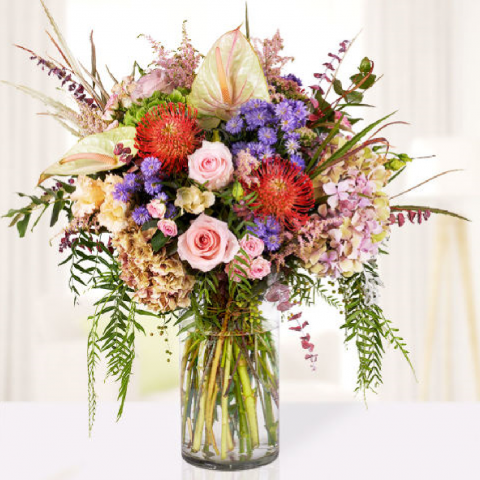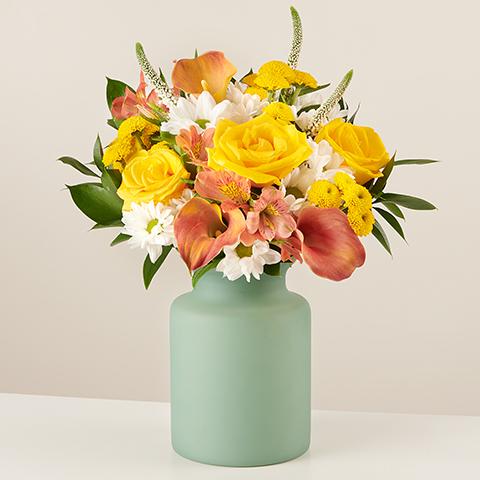Sometimes, people are unsure of what to do with the beautiful flowers they receive that are associated with significant memories. What should you do with the flowers you bought for Valentine’s Day after the holiday passes? What about a priceless bridal bouquet, or a beautiful “get-well” flower assortment you received? Whatever the flowers were for, immortalizing your memories is a much easier process than you may think.
Imagine being able to have these flowers for a long time with no compromise to their beauty. This preservation can be achieved by drying said flowers, which helps to preserve their sentimental value and their original beauty. There are two trusted methods that are used for drying flowers. Once you are aware of these, it will be easy for you to get them done. In this article, we will explain what both methods are, as well as the steps involved in each.
You will learn the following:
• The Available Methods
• How the Air-drying Process Works – Preparation
• How the Air-drying Process Works – Implementation
• How the Microwave Drying Process Works – Preparation
• How the Microwave Drying Process Works – Implementation
The Available Methods
The two ways of drying flowers that we will discuss in this article are:
• Air drying
• Microwave drying
Before diving into the instructions, there are a few considerations you need to make. These help you to assess if your flowers can be dried well, as well as how well they will dry. The considerations are:
• Bouquets respond best to air drying.
Robust flowers such as roses and long-lasting, small flower types such as lavender also follow this pattern.
• The microwave drying technique does a better job of color preservation than air drying does. Therefore, flower types such as tulips, chrysanthemums, roses, and individual gerbera daises are great candidates for microwave drying.
• Other preservation techniques such as pressing may be better options for delicate flowers such as lilies
• Don’t wait too long to start the drying process. This is because fully mature blooms are likely to lose their petals.
How the Air-drying Process Works – Preparation
To get your flowers ready for the air-drying process, begin by cutting their stems to the length you desire. You should also ensure that any excess foliage is stripped from the flowers as well. It is a good idea to ensure that the flowers are shielded from sunlight after they are cut.
By doing this, you allow the flowers to retain their color throughout the process of drying. You can hang the flowers individually, or you can hang a bouquet by rubber banding stems together. Once you have successfully completed these steps, you are ready to get the air-drying process rolling.
How the Air-drying Process Works – Implementation
Now that you have prepared your plants, we can focus on the drying. First, you need to ensure that the environment you use is conducive to the process of air-drying flowers. A good idea is to use an area that is dry, dark, and one that has great air circulation. Areas that typically fit this bill and contribute to effective drying include unused closets or attics.
You need to secure the base of the flowers’ stems to a hanger to get started. This is because the flowers need to hang upside down, so they can dry effectively. It is recommended that you use unflavored dental floss to achieve this. Once you find an ideal place for your hanger, leave it hung until the flowers are completely dry. This typically takes two to three weeks, but it can take longer. After drying completes, remove the flowers and spray with unscented hairspray.
How the Microwave Drying Process Works – Preparation
The first thing you need to get your hands on for this process is silica gel. You should be able to get this in any craft store near you. The gel helps you to maintain the shape of the flowers. Additionally, it can be used repeatedly once you see the need. Next, you need to get a microwave safe container that will be used for the process.
This container needs to fit well into the microwave, and it needs to be able to hold the flowers. It is recommended that you choose a container that you have no intention of using for food thereafter. The base of the container is to be covered with one or two inches of silica gel. You may need more than this if the flowers have large blossoms. Place the flowers in the gel blossom up, then pour more on the petals without flattening them.
How the Microwave Drying Process Works – Implementation
Put the uncovered container in the microwave. The type of flower determines the “right” temperature and time. Therefore, a little trial and error may be required. For 2-5 minutes, set the microwave to run above “defrost,” by one or two heat levels. Do an initial check on your flowers shortly after you start the microwave. Afterward, check how your flowers are doing regularly and increase the time and heat where needed.
After the flowers become dry, you can open the microwave. Cover the container immediately and take it out of the microwave. Crack the cover about a quarter centimeter, and let it stay for a period of 24 hours. This allows the flowers to cool, and it allows the drying process to complete. Using a fine brush, ensure the gel is cleaned from the petals. Mist the flowers using an acrylic spray, which can also be bought at craft stores.
Final Remarks
After your preferred drying process is complete, you can then decide what to do with these symbols of your memories. Most people put the dried flowers on display somewhere, or they use them as part of a decoration. Remember that dried flowers need to be kept away from extreme heat and kept away from focused sunlight.
This is because the brilliance of their colors fades easily in those conditions. Therefore, it is recommended that your dried flowers are kept away from windows. Cool areas are best for keeping them if you want to maintain their beauty. Flowers are a great way to express sentimental value, and the ability to preserve them is a privilege. We believe you should be able to enjoy your memories if you so desire.














